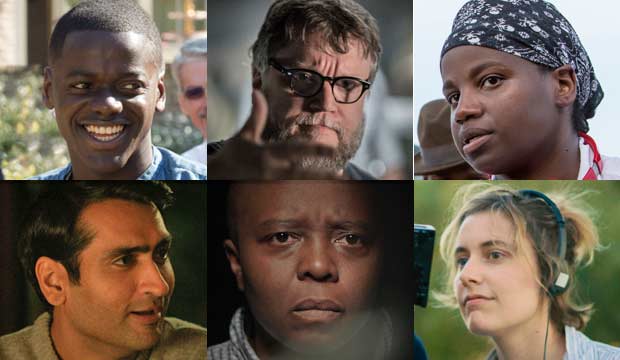Where Does It All Go Wrong?
While the people at the top of the food chain - the ones that get the awards, big deals with studios, and recognition - are mostly straight white men, many Drama, Screenwriting, and Filmmaking students are from minority backgrounds (Green, 2017). This leaves me to question where the point comes that leaves us with the majority of films being made by white people, for white people?
Looking at my own university (The University of York, UK), it's clear to see there is a diverse range of students. There is an almost 50% male to female split in my cohort on the Film and Television Production course, suggesting that there is definitely interest from an equal amount of men and women to enter the industry. So where does the point come that makes it so that only 3.3% of big budget (£30+ million) feature films are directed by women? (Directors UK, 2016)
This mini-doc from The Guardian looks at the amount of students there are at prestigious creative arts schools in the UK, the amount of people from ethnic minority backgrounds in the UK film and TV workforce, and what has to be changed in order to truly reflect the diversity of the UK. This video reveals some interesting statistics.
This problem has been acknowledged by leaders of the UK TV industry in Diamond: The First Cut, published by the Creative Diversity Network in August 2017, in an attempt to highlight the problems and find the solutions to the lack of diversity in the UK TV industry.
From the findings within the report, Channel 4 and the BBC devised their own diversity and inclusion charters as a means to combat the problem. Within these documents, the broadcasters made pledges to increase the numbers of people from minority groups in higher positions. Both the BBC and Channel 4 also acknowledged the distinct lack of disability visibility, both in front of, and behind the camera, promising to increase their disabled workforces.
Alongside this, the BFI released their Diversity Standards for the British film industry back in 2016. This document outlines the standards for publicly funded British films going forward, which have to meet certain objectives in order to be produced. Some of the issues raised and in the piece are that of diversity in story, character, casting, directing, screenwriting, distribution, and audiences to name a few.
Looking at my own university (The University of York, UK), it's clear to see there is a diverse range of students. There is an almost 50% male to female split in my cohort on the Film and Television Production course, suggesting that there is definitely interest from an equal amount of men and women to enter the industry. So where does the point come that makes it so that only 3.3% of big budget (£30+ million) feature films are directed by women? (Directors UK, 2016)
This mini-doc from The Guardian looks at the amount of students there are at prestigious creative arts schools in the UK, the amount of people from ethnic minority backgrounds in the UK film and TV workforce, and what has to be changed in order to truly reflect the diversity of the UK. This video reveals some interesting statistics.
The documentary reveals that, despite the UK population being 13% non-white, only 5.3% of the UK film production workforce is, with even smaller numbers of people of colour being in the top ranks. This is surprising due to the relatively diverse cohort of film and drama students in this country. David Kemp - the director of the Royal Academy of Dramatic Art (RADA) - stated in the film that "25% of our current acting cohort come from BAME backgrounds, and 40% of our students, we know, come from family backgrounds who earn less than £25,000". This shows that the problem doesn't lie in getting the education, but in getting in to the workforce itself.
This problem has been acknowledged by leaders of the UK TV industry in Diamond: The First Cut, published by the Creative Diversity Network in August 2017, in an attempt to highlight the problems and find the solutions to the lack of diversity in the UK TV industry.
From the findings within the report, Channel 4 and the BBC devised their own diversity and inclusion charters as a means to combat the problem. Within these documents, the broadcasters made pledges to increase the numbers of people from minority groups in higher positions. Both the BBC and Channel 4 also acknowledged the distinct lack of disability visibility, both in front of, and behind the camera, promising to increase their disabled workforces.
Alongside this, the BFI released their Diversity Standards for the British film industry back in 2016. This document outlines the standards for publicly funded British films going forward, which have to meet certain objectives in order to be produced. Some of the issues raised and in the piece are that of diversity in story, character, casting, directing, screenwriting, distribution, and audiences to name a few.
 | |
|
While there are obvious attempts happening to ensure a more diverse future for the British Film and Television industries, it's still clear there's a long way to go. It's going to take many years for us to see the changes that are being made behind the scenes come through on to our screens.



Comments
Post a Comment